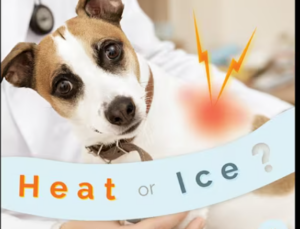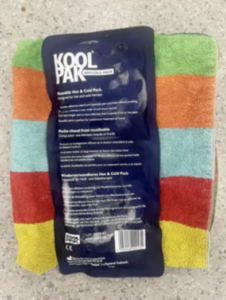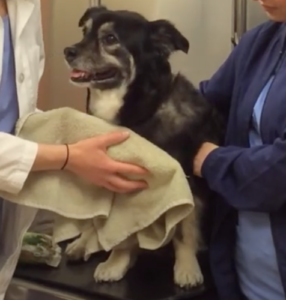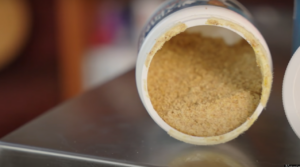 When a pet is recovering from surgery or injury, managing pain and swelling is a crucial part of their healing process. One of the most effective methods to reduce inflammation and numb pain is the application of an ice pack. Ice helps constrict blood vessels, limiting the flow of fluid to the injured area, which in turn reduces swelling and prevents further damage to tissues. The cold also numbs the area, providing pain relief and allowing pets to rest more comfortably during their recovery period.
When a pet is recovering from surgery or injury, managing pain and swelling is a crucial part of their healing process. One of the most effective methods to reduce inflammation and numb pain is the application of an ice pack. Ice helps constrict blood vessels, limiting the flow of fluid to the injured area, which in turn reduces swelling and prevents further damage to tissues. The cold also numbs the area, providing pain relief and allowing pets to rest more comfortably during their recovery period.
Caution If Using An Ice Pack
Using an ice pack on pets, however, requires careful consideration to avoid causing harm. Pets, especially dogs and cats, have sensitive skin that can be easily damaged by direct contact with ice. To safely use an ice pack, always place a towel, cloth, or thin layer of fabric between the ice pack and the pet’s skin. This protective barrier prevents frostbite, which can occur if the cold source is applied directly for too long. The ideal method is to apply the ice pack for 10-15 minutes at a time, allowing the pet to rest in between sessions. Repeating this process several times a day can help manage swelling and discomfort, but be sure to monitor the pet closely for any signs of distress, such as excessive shivering or trying to move away from the ice.
Choosing The Best Ice Pack
 When choosing the best ice pack for a pet recovering from surgery or injury, it’s important to consider both effectiveness and safety. The best ice packs for pets are flexible, allowing them to conform to the shape of the injured area, and they should be durable enough to withstand multiple uses. Reusable gel ice packs are a popular choice because they stay cold for a reasonable period and can mold around the injury, whether it’s a leg, joint, or the abdomen. Some specialized pet ice packs come with a soft cover or sleeve, making them even safer and more comfortable for the pet. These packs are designed to be gentle on the skin while providing the necessary cooling effect. For larger injuries, such as after a spay or neuter surgery, larger ice packs or ice wraps may be more effective.
When choosing the best ice pack for a pet recovering from surgery or injury, it’s important to consider both effectiveness and safety. The best ice packs for pets are flexible, allowing them to conform to the shape of the injured area, and they should be durable enough to withstand multiple uses. Reusable gel ice packs are a popular choice because they stay cold for a reasonable period and can mold around the injury, whether it’s a leg, joint, or the abdomen. Some specialized pet ice packs come with a soft cover or sleeve, making them even safer and more comfortable for the pet. These packs are designed to be gentle on the skin while providing the necessary cooling effect. For larger injuries, such as after a spay or neuter surgery, larger ice packs or ice wraps may be more effective.
Alternative Support Techniques
 In addition to ice therapy, other measures can be taken to help pets recover from surgery or injury. Providing a quiet, comfortable resting space is essential, as pets need adequate sleep and relaxation for healing. Restricting their movement to prevent further injury is also important, and many pet owners use crates or confined spaces to keep their pets from running, jumping, or overexerting themselves. You may also need to monitor the pet’s activity level and prevent them from licking or chewing at their wounds, as this can lead to infections or slow down the healing process. In some cases, Elizabethan collars, or “cone collars,” may be necessary to keep pets from interfering with their recovery site.
In addition to ice therapy, other measures can be taken to help pets recover from surgery or injury. Providing a quiet, comfortable resting space is essential, as pets need adequate sleep and relaxation for healing. Restricting their movement to prevent further injury is also important, and many pet owners use crates or confined spaces to keep their pets from running, jumping, or overexerting themselves. You may also need to monitor the pet’s activity level and prevent them from licking or chewing at their wounds, as this can lead to infections or slow down the healing process. In some cases, Elizabethan collars, or “cone collars,” may be necessary to keep pets from interfering with their recovery site.
Nutrition also plays a vital role in a pet’s recovery. A balanced diet rich in protein and nutrients can promote faster healing and support immune function. Some veterinary practices recommend supplements, such as omega-3 fatty acids, which have anti-inflammatory properties, or glucosamine and chondroitin for joint support. Ensuring that the pet stays hydrated is equally important, as proper fluid intake aids in reducing swelling and supporting overall recovery.
Regular follow-up appointments with a veterinarian are essential to monitor progress and address any complications that may arise. Pain management may also be necessary, with the veterinarian prescribing medication to alleviate discomfort and promote healing. By combining ice therapy, controlled rest, proper nutrition, and professional care, pet owners can help their pets recover comfortably and efficiently from surgery or injury.

 Another growing trend is raw feeding, or the “BARF” diet (biologically appropriate raw food), which includes raw meat, bones, fruits, and vegetables. Proponents of the raw food diet believe that dogs thrive on a diet closer to what their ancestors ate in the wild, providing optimal nutrition and improving coat health, digestion, and energy levels. Raw meat, along with bones for natural chewing and dental health, is a rich source of protein, and fruits and vegetables provide antioxidants and vitamins. However, raw feeding requires careful planning and research to ensure it is nutritionally balanced and safe, particularly when it comes to preventing bacterial contamination or bone splinters.
Another growing trend is raw feeding, or the “BARF” diet (biologically appropriate raw food), which includes raw meat, bones, fruits, and vegetables. Proponents of the raw food diet believe that dogs thrive on a diet closer to what their ancestors ate in the wild, providing optimal nutrition and improving coat health, digestion, and energy levels. Raw meat, along with bones for natural chewing and dental health, is a rich source of protein, and fruits and vegetables provide antioxidants and vitamins. However, raw feeding requires careful planning and research to ensure it is nutritionally balanced and safe, particularly when it comes to preventing bacterial contamination or bone splinters. Incorporating granola into a dog’s diet is an interesting and lesser-known alternative, but it should be approached with caution. Granola, while a healthy snack for humans, is not typically recommended for pets. It often contains ingredients like raisins, nuts, chocolate, and sweeteners such as honey, which are toxic to dogs. However, plain, unsweetened granola without these harmful ingredients can be an occasional treat in small quantities. It can provide fiber and nutrients, but it should never replace a balanced diet for pets. Granola should only be given in moderation, as too much could lead to weight gain due to its high-calorie content. It’s always advisable to consult with a veterinarian before introducing new foods like
Incorporating granola into a dog’s diet is an interesting and lesser-known alternative, but it should be approached with caution. Granola, while a healthy snack for humans, is not typically recommended for pets. It often contains ingredients like raisins, nuts, chocolate, and sweeteners such as honey, which are toxic to dogs. However, plain, unsweetened granola without these harmful ingredients can be an occasional treat in small quantities. It can provide fiber and nutrients, but it should never replace a balanced diet for pets. Granola should only be given in moderation, as too much could lead to weight gain due to its high-calorie content. It’s always advisable to consult with a veterinarian before introducing new foods like  It has been proven that animals are always a great addition to a family. Many of them make kids happier by giving them a friend they can play with, but they are also great for adults since they usually ensure that everyone who is in the home stays active. Dogs have also become known for their ability to provide a service to their masters. There are police dogs who can sniff out bad things and take down bad people if need be. There are also service dogs that can sense when their owner is about to have a seizure or some other health issue. With all the good that animals provide, it should not be a surprise to anyone that they are also great healers. Therapy dogs and other animals are frequently used in hospitals to help the patients be a little happier and it is becoming even more popular with each passing year.
It has been proven that animals are always a great addition to a family. Many of them make kids happier by giving them a friend they can play with, but they are also great for adults since they usually ensure that everyone who is in the home stays active. Dogs have also become known for their ability to provide a service to their masters. There are police dogs who can sniff out bad things and take down bad people if need be. There are also service dogs that can sense when their owner is about to have a seizure or some other health issue. With all the good that animals provide, it should not be a surprise to anyone that they are also great healers. Therapy dogs and other animals are frequently used in hospitals to help the patients be a little happier and it is becoming even more popular with each passing year. Animal therapy is a type of therapy for people that can improve a patient’s entire outlook. It can help them mentally, physically, socially, and emotionally. There are also different types of animals available to help people. It depends on what the person needs as to which type of animal may work the best for them, but dogs, horses, rabbits, llamas, and even dolphins can be used. There are also other types of animals. These animals can help a person with cancer, addictions, heart disease, dementia, emotional or behavioral disorders, autism, chronic pain, and more. The animals, depending on specific needs, may be able to help improve balance, increase focus, relieve grief and anxiety, or reduce blood pressure so that the patient can worry less about having a stroke or a heart attack.
Animal therapy is a type of therapy for people that can improve a patient’s entire outlook. It can help them mentally, physically, socially, and emotionally. There are also different types of animals available to help people. It depends on what the person needs as to which type of animal may work the best for them, but dogs, horses, rabbits, llamas, and even dolphins can be used. There are also other types of animals. These animals can help a person with cancer, addictions, heart disease, dementia, emotional or behavioral disorders, autism, chronic pain, and more. The animals, depending on specific needs, may be able to help improve balance, increase focus, relieve grief and anxiety, or reduce blood pressure so that the patient can worry less about having a stroke or a heart attack.